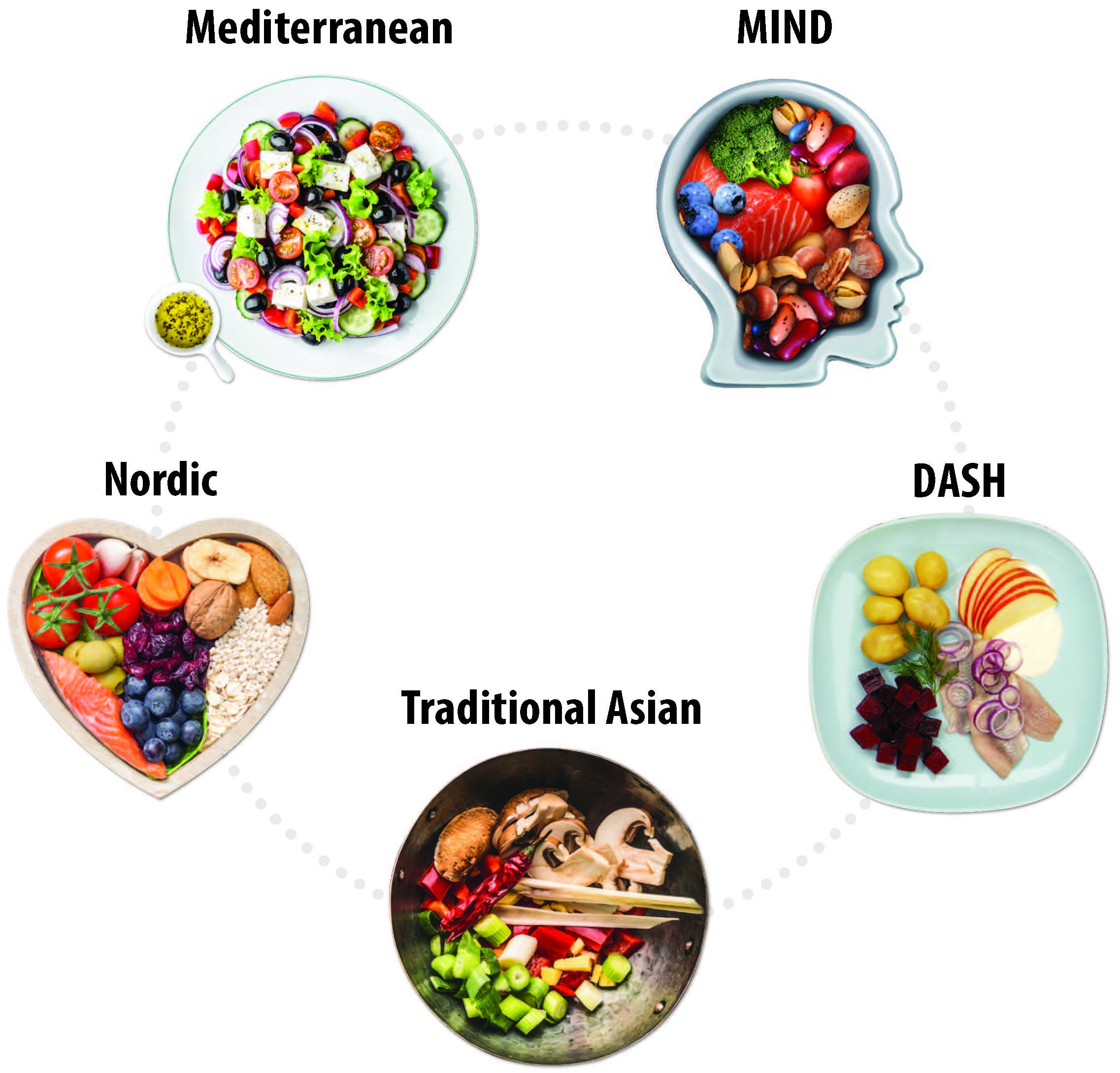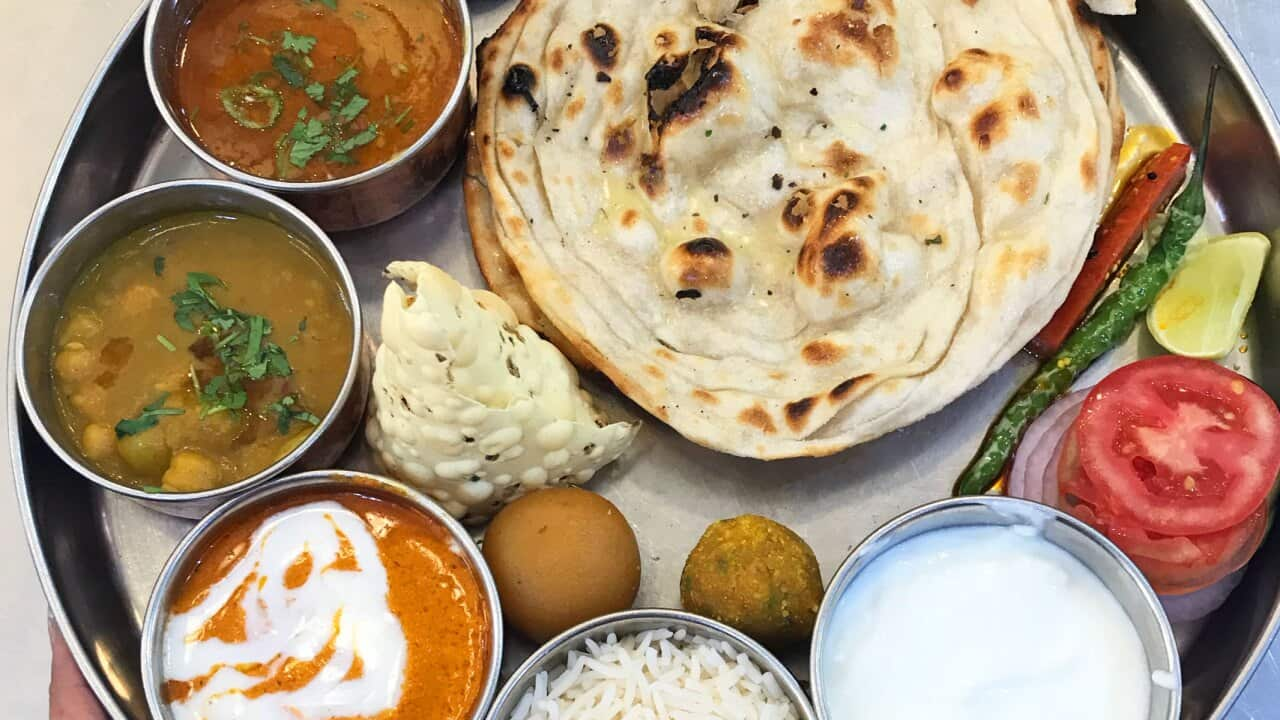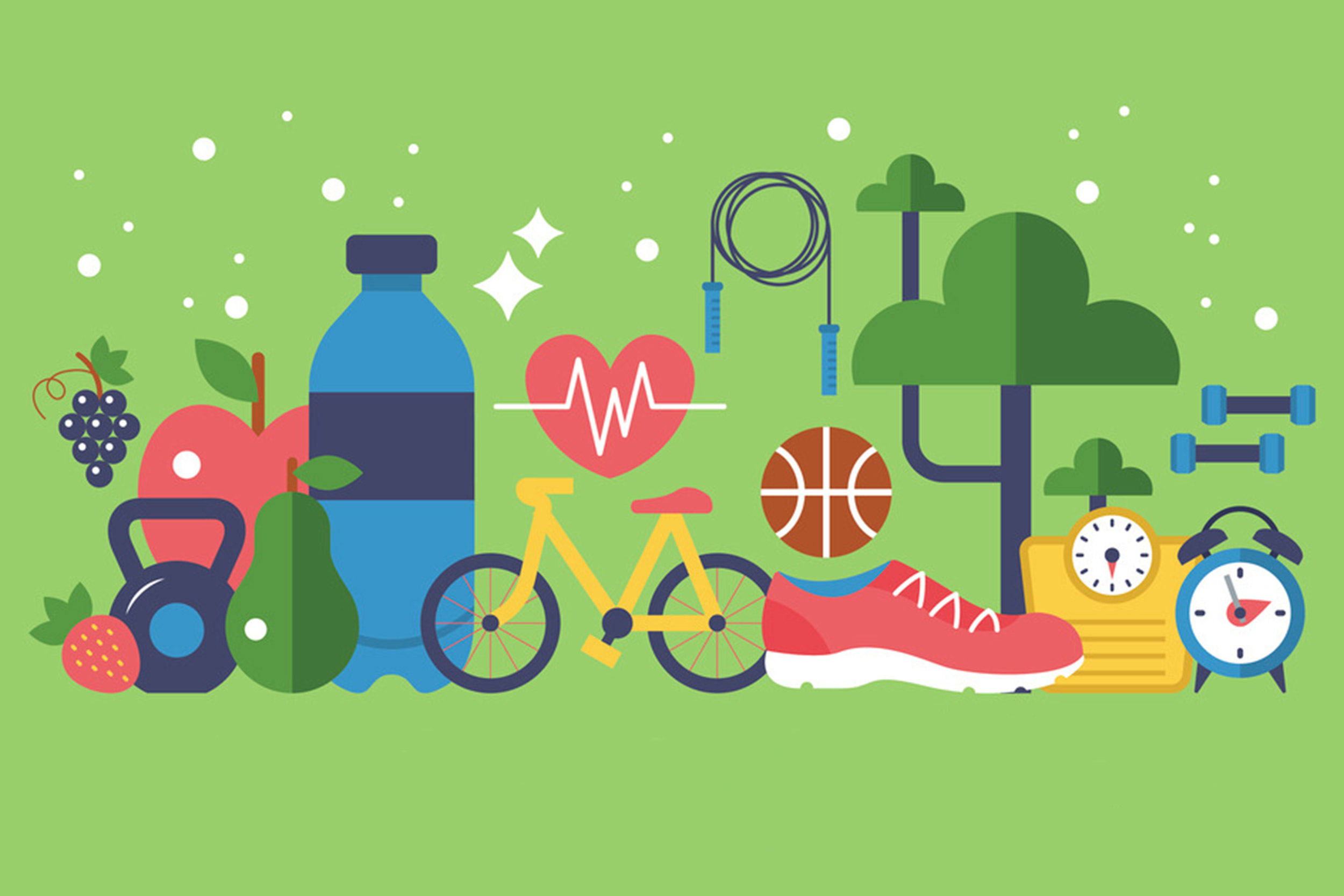Struggling With Sugar Control? Try This 7 Day Indian Diet Plan for Diabetic Patients
Struggling to manage your sugar levels? This 7 day Indian diet plan for diabetic patients includes simple, effective food choices to help you eat smart and stay balanced.
If managing your sugar levels feels like a daily battle, you're not alone. For many diabetic patients, mealtimes bring more stress than comfort — especially when traditional foods seem off-limits and nutrition advice feels confusing.
You don’t need a complicated diet or imported superfoods to take control. With the right Indian meals, planned simply across the week, you can support blood sugar control without giving up your culture, taste, or routine. It’s all about structure — and the right mix of timing, portion, and food choices.
This article gives you a doctor-backed 7 day Indian diet plan made specifically for diabetic patients. Whether you're newly diagnosed or looking for better day-to-day stability, this guide offers practical, easy-to-follow meals designed to help you eat smarter and feel in control.
What is Diabetes Management and What Issues Do Diabetes Patients Face?

Diabetes management is the daily process of keeping your blood sugar levels within a healthy range. It includes balanced eating, regular activity, and tracking sugar levels to prevent complications.
Common Struggles Faced by Diabetes Patients

Living with diabetes isn’t just about avoiding sugar — it’s about consistency, awareness, and making smart food choices every day. But for many diabetic patients, managing these changes long term can feel like an uphill task.
Below are some of the most common challenges that make diabetes management harder than it should be.
1. Difficulty Sticking to a Balanced Diet
Many people struggle to maintain a balanced diet because they’re unsure what to include or avoid. Traditional meals often contain refined grains like white rice and white bread, which can raise blood sugar quickly.
-
Swapping these with whole grains or brown rice takes planning and awareness
-
Lack of variety in nutritious meals often leads to boredom and giving up
-
Portion control is also a challenge, especially when eating outside
Following a structured diet plan, like a 7 day indian diet plan for diabetic patients, can make it easier to stay consistent.
2. Struggling to Control Blood Sugar Levels Throughout the Day
Keeping blood sugar levels stable is one of the biggest struggles for diabetes patients. It often changes based on how different foods are eaten and when.
-
Skipping meals or eating at odd times can spike blood glucose levels
-
High-carb meals without enough healthy fats or lean protein sources can affect blood sugar regulation
-
Inconsistent routines make blood sugar control difficult
A well-planned diabetic diet chart helps maintain steady energy and regulate blood sugar levels more effectively.
3. Cravings and Hunger Between Meals
Cravings are normal, but for managing diabetes, frequent snacking — especially on sugary foods or soft drinks — makes things worse.
-
Not enough complex carbohydrates or non starchy vegetables can cause fast hunger
-
Lack of healthy foods like green leafy vegetables or kidney beans may reduce satiety
-
Emotional eating also plays a role, especially when routines are unstructured
Having a reliable diet chart for diabetic patients that includes snacks like unsweetened almond milk, low fat milk, or a handful of nuts helps reduce cravings.
4. Confusion Around What to Eat and What to Avoid
There’s a lot of mixed advice about what foods to include in a diabetes diet. Many don’t know which Indian food options are better or worse for blood sugar management.
-
Some think fruit juices are healthy, but they often spike blood sugar levels
-
Avoid sugary drinks, choose green tea, and focus on low glycemic index foods
-
Many traditional items can be part of an indian diabetic diet chart — they just need the right portions
Using a trusted diabetic diet plan clears this confusion and helps build daily confidence.
5. Social Pressure During Festivals and Family Meals
In Indian culture, food is celebration — and it’s hard to say no. This makes managing diabetes effectively during events especially tough.
-
Traditional sweets and fried foods are often unavoidable
-
There's pressure to "just try a little," which can impact blood sugar levels significantly
-
Many don't know how different Indian food items affect blood sugar levels
A clear indian diet plan helps prepare better choices in advance and supports a healthy lifestyle even in social settings.
6. Lack of Consistent Meal Timings
Irregular meals confuse your body and mess with blood sugar regulation. Eating too late or skipping meals can lead to high blood sugar levels or sudden drops.
-
Many diabetic patients skip breakfast or delay lunch due to busy routines
-
Unplanned meals often miss out on healthy fats, lean protein sources, and non starchy vegetables
-
This can impact insulin sensitivity and weight gain
Following a structured meal plan helps improve insulin resistance and supports weight management over time.
7. Skipping Meals Leading to Low Energy and Spikes
Skipping meals doesn’t help with weight loss or blood sugar control. In fact, it can do the opposite — leading to sudden cravings, fatigue, and overeating later.
-
Skipped meals lower insulin sensitivity, leading to spikes after the next big meal
-
It affects both overall health and better blood sugar control goals
-
It also makes it harder to maintain a healthy weight or follow a well balanced diet
Using a chart for diabetic patients ensures no meal is missed and each one is structured to support your health.
Why Conventional Diets Fall Short

Many people try standard diet plans to manage diabetes, but they often don’t work for long. These diets usually don’t match Indian food habits, which makes them hard to follow every day.
-
Most of them miss common meals like roti, rice, or mixed vegetable curry
-
They don’t explain how certain foods affect blood sugar regulation
-
They don’t help in managing blood sugar levels the way a proper indian diet chart does
Another issue is that they rarely focus on keeping blood sugar levels stable. They may include the right foods but not the right timings or portions.
-
Some suggest cutting out oils completely, but small amounts of olive oil in cooking can actually support a healthy diet
-
A diabetic diet needs balance, not extreme changes
-
Portion size and meal timing play a big role in stable blood sugar levels
Most conventional plans also ignore real-life eating habits. They don’t include familiar meals or realistic swaps, which makes them hard to follow.
A well-structured diabetic diet based on an indian diet chart helps create lasting change. It works better because it fits local foods and supports both nutrition and daily comfort.
Sample 7-Day Diet Chart for Diabetic Patients: Simple and Practical Plan

A good diet for diabetic patients should be simple, local, and easy to follow. This 7-day plan offers three options each day — vegetarian, non-vegetarian, and vegan — all focused on balanced meals that support stable blood sugar levels.
Day 1
Vegetarian:
-
Breakfast: Oats porridge with chia seeds + 1 boiled egg
-
Lunch: 2 whole wheat rotis, mixed vegetable curry, cucumber salad
-
Snack: Handful of roasted chana + green tea
-
Dinner: Moong dal khichdi with sautéed spinach
Non-Vegetarian:
-
Breakfast: Vegetable upma + 1 boiled egg
-
Lunch: Brown rice, grilled chicken, mixed salad
-
Snack: 5 almonds + green tea
-
Dinner: 2 multigrain rotis, chicken curry, stir-fried beans
Vegan:
-
Breakfast: Ragi porridge with ground flaxseeds
-
Lunch: Quinoa with chana curry and beetroot salad
-
Snack: Roasted pumpkin seeds + herbal tea
-
Dinner: Vegetable stew with red rice and sautéed broccoli
Day 2
Vegetarian:
-
Breakfast: Besan chilla with mint chutney
-
Lunch: Vegetable pulao with curd
-
Snack: Sprouts chaat + green tea
-
Dinner: 2 rotis, palak paneer, cucumber slices
Non-Vegetarian:
-
Breakfast: Moong dal dosa + egg bhurji
-
Lunch: Brown rice, fish curry, sautéed greens
-
Snack: 6 walnuts + herbal tea
-
Dinner: 2 rotis, chicken with bottle gourd, mixed salad
Vegan:
-
Breakfast: Soaked oats with almond milk and berries
-
Lunch: Brown rice with rajma curry and salad
-
Snack: Carrot sticks + hummus
-
Dinner: Bajra khichdi with stir-fried okra
Day 3
Vegetarian:
-
Breakfast: Vegetable poha + 1 boiled egg
-
Lunch: 2 rotis, lauki sabzi, dal, and salad
-
Snack: Roasted peanuts + green tea
-
Dinner: Vegetable biryani with raita
Non-Vegetarian:
-
Breakfast: Vegetable sandwich on multigrain bread + boiled egg
-
Lunch: Quinoa, grilled chicken, sautéed beans
-
Snack: Almonds + buttermilk
-
Dinner: 2 rotis, chicken curry, carrot salad
Vegan:
-
Breakfast: Daliya with nuts and unsweetened almond milk
-
Lunch: Red rice with masoor dal and sautéed beans
-
Snack: Fruit slices + black coffee
-
Dinner: Millet rotis with mixed vegetable curry
Day 4
Vegetarian:
-
Breakfast: Ragi dosa + coconut chutney
-
Lunch: Brown rice, vegetable sambhar, and bhindi fry
-
Snack: Moong sprouts + lemon
-
Dinner: 2 rotis, paneer bhurji, tomato soup
Non-Vegetarian:
-
Breakfast: Boiled eggs + multigrain toast
-
Lunch: Chicken biryani (low oil) + salad
-
Snack: Greek yogurt + walnuts
-
Dinner: 2 rotis, egg curry, sautéed vegetables
Vegan:
-
Breakfast: Poha with peas and ground flaxseed
-
Lunch: Quinoa pulao with tofu and salad
-
Snack: Coconut water + mixed seeds
-
Dinner: Bajra roti with bottle gourd curry
Day 5
Vegetarian:
-
Breakfast: Oats idli + sambar
-
Lunch: 2 rotis, bhindi sabzi, mixed dal
-
Snack: Curd with cinnamon + roasted seeds
-
Dinner: Brown rice with rajma
Non-Vegetarian:
-
Breakfast: Omelette + 1 slice whole wheat toast
-
Lunch: Red rice, fish curry, sautéed vegetables
-
Snack: Boiled egg + green tea
-
Dinner: 2 rotis, chicken stew, cucumber salad
Vegan:
-
Breakfast: Millet porridge with almond milk
-
Lunch: Brown rice, kala chana curry, salad
-
Snack: Roasted makhana + black tea
-
Dinner: Moong dal khichdi with carrot and beans
Day 6
Vegetarian:
-
Breakfast: Vegetable paratha (no oil) + curd
-
Lunch: Brown rice with mixed vegetable curry
-
Snack: Fruit chaat + green tea
-
Dinner: 2 rotis, dal fry, sautéed greens
Non-Vegetarian:
-
Breakfast: Multigrain sandwich with egg mayo (low-fat)
-
Lunch: Chicken curry with quinoa and salad
-
Snack: Handful of nuts + lemon water
-
Dinner: 2 rotis, grilled fish, mixed stir-fry
Vegan:
-
Breakfast: Boiled sweet potato with black salt
-
Lunch: Millets with dal and stir-fried okra
-
Snack: Soaked almonds + herbal tea
-
Dinner: Vegetable soup with lentil salad
Day 7
Vegetarian:
-
Breakfast: Idli + chutney
-
Lunch: Vegetable khichdi with curd
-
Snack: Buttermilk + peanuts
-
Dinner: 2 rotis, mixed veg curry, salad
Non-Vegetarian:
-
Breakfast: Boiled egg + vegetable upma
-
Lunch: Brown rice, chicken curry, beans stir-fry
-
Snack: Low-fat yogurt + walnuts
-
Dinner: 2 rotis, egg bhurji, sautéed spinach
Vegan:
-
Breakfast: Oats with almond milk and fruit
-
Lunch: Quinoa with rajma and raw salad
-
Snack: Coconut water + roasted chana
-
Dinner: Bajra rotis with brinjal sabzi
Ready to simplify your meals? Download the Balance Bite 7‑Day Chart now
5 Ways a Diabetic Diet Chart Supports Better Blood Sugar Control

A diabetic diet chart is more than a meal plan — it’s a daily guide that helps manage food, timing, and portions in a simple and steady way. Done right, it can help support blood sugar levels and build better eating habits without making big changes all at once.
Here’s how it helps with better control and smarter food choices.
1. Provides a Balanced Diet Without Guesswork
Many people are unsure about what to eat when dealing with diabetes. A diabetic diet chart removes the confusion by laying out clear food options for each meal.
-
It avoids unhealthy fats and adds better choices like monounsaturated and polyunsaturated fats
-
Meals include vegetables like bell peppers, whole grains, and lean proteins
-
A well-made chart also supports a healthy mix of nutrients for steady energy
This kind of planning is key to improving overall eating patterns and building a healthy lifestyle.
2. Helps Control Blood Sugar Levels with Timed Meals
Irregular eating can lead to sudden spikes or drops in sugar. A structured plan fixes that by spreading meals across the day.
-
Timed meals help keep blood sugar levels stable
-
They prevent long gaps between meals that can harm insulin response
-
Regular eating also supports better digestion and energy flow
Over time, these patterns improve insulin sensitivity and help the body process sugar more effectively.
3. Reduces the Risk of Sudden Spikes or Drops
One of the biggest goals of any diabetic food chart is to avoid quick sugar spikes after meals. Sudden changes in sugar can leave you tired, dizzy, or craving more food.
-
The chart includes foods that release energy slowly, like whole grains and legumes
-
It avoids sugary items and refined carbs that spike sugar quickly
-
Meals with fiber and healthy fats help reduce such sudden highs and lows
With consistent meals, your blood sugar stays steady throughout the day.
4. Encourages Portion Control and Smart Food Choices
Overeating or eating the wrong type of foods can lead to sugar imbalances. A chart helps with both.
-
It limits portion size, making it easier to avoid excess
-
It replaces unhealthy fats with lighter options
-
It shows better snack choices, like nuts or yogurt instead of fried snacks
When you follow a chart, you're less likely to make random or rushed food choices.
5. Builds Long-Term Habits for Better Diabetes Management
Short diets don’t work — habits do. A diabetic diet chart helps form a steady pattern that you can stick to.
-
It teaches you how different foods affect your sugar levels
-
It includes simple meals you can repeat or rotate
-
Over time, it helps with managing diabetes through daily routines
Most importantly, it supports a simple and realistic way to improve insulin sensitivity and stay in control of your health.
How Balance Bite Helps You Stay Consistent With Your Diabetic Meal Plan

Sticking to a diabetic meal plan sounds easy — until life gets in the way. Balance Bite solves that problem by giving users structure, variety, and food choices that actually work in real-life situations.
Missed Meals Were Spiking Sugar
Challenge:
Many diabetic users reported skipping meals due to lack of planning. This often led to blood sugar spikes and cravings later. In fact, 6 out of 10 users said they had no clear idea of what to eat when they were hungry.
Strategy:
Build a guided meal plan that removes guesswork — with pre-designed options tailored for balanced blood sugar.
Execution:
Balance Bite’s platform delivers a daily chart with clear meal breakdowns:
-
Breakfast, lunch, snack, dinner — all aligned to low GI and high-fiber goals
-
Swaps for regional preferences (e.g., North vs South Indian meals)
-
Alerts and reminders to stay on schedule
Closing Insight:
With Balance Bite, 85% of users reported fewer skipped meals and better sugar control within one week. The system makes the diabetic diet sustainable — not stressful. It’s not just a plan, it’s a habit-building tool.
Challenges with Balancing Traditional Indian Meals and Diabetes Diets

Indian meals are full of flavor, but not always diabetes-friendly. Many traditional foods are rich in carbs, sugar, and fat — which can make blood sugar control harder without major changes in cooking and eating habits.
Here are some of the biggest roadblocks people face:
1. High Use of Refined Carbs Like White Rice and Maida
Refined carbs digest quickly and can spike blood sugar levels. Foods like white rice, maida-based parathas, or puris are common in Indian homes.
-
These foods don’t keep you full for long
-
They don’t support steady sugar levels
-
Eating too much of them regularly can reduce how well your body uses enough insulin
Replacing them with brown rice, millets, or whole wheat alternatives can help.
2. Excessive Reliance on Sweets and Desserts in Daily Meals
From tea-time snacks to after-meal sweets, sugar is everywhere. Even homemade desserts like halwa or kheer are often loaded with sugar and ghee.
-
These cause rapid sugar spikes
-
They offer little nutrition
-
Regular intake makes sugar control harder over time
Smaller portions or low-sugar versions can be a better fit in a diabetic diet.
3. Difficulty Avoiding Fried Foods and Ghee-Based Dishes
Deep-fried snacks and heavy meals cooked in ghee are comfort foods — but they’re not helpful for diabetes.
-
They increase unhealthy fat intake
-
They slow digestion and impact how your body uses insulin
-
Eating them too often may lead to weight gain or insulin resistance
Switching to baked or air-fried versions with minimal oil is a practical step.
4. Irregular Meal Timings and Overeating During Festive Seasons
During holidays or family functions, meal timings become inconsistent. Overeating in such moments is common.
-
Skipping meals earlier in the day can lead to binge eating later
-
Long gaps between meals make blood sugar levels harder to manage
-
Sudden overeating may require more insulin than the body can produce
Planning smaller, frequent meals can help keep things in balance during festive times.
5. Misconceptions Around “Healthy” Traditional Foods
Not all home-cooked foods are automatically healthy. Items like fruit juices or heavy dals may still spike sugar levels.
-
Many people think fresh juice is safe — but it digests too fast
-
Foods like potato-based sabzis are often high in starch
-
Some believe jaggery is better than sugar, but both affect sugar levels
Reading labels and watching ingredients can help clear these confusions.
6. Lack of Awareness About Low-Glycemic Swaps
Many people don’t know that small swaps can make traditional meals safer for diabetic patients.
-
Swap white rice with brown rice or millets
-
Use rolled oats instead of maida for chilla
-
Add fiber-rich veggies to balance carb-heavy meals
These changes support blood sugar control without giving up favorite foods.
Want meal swaps that suit local tastes? Explore Balance Bite’s Indian‑friendly options
Flavor and Flexibility in the Indian Diabetic Diet

A diabetic diet doesn't have to be boring or repetitive. Indian food offers a wide range of flavors, spices, and ingredients that can be adapted easily for diabetes-friendly meals. With a few smart choices, you can enjoy your favorite foods without spiking your sugar levels.
The key is to balance taste with health — and to know what to change, not what to cut out completely.
Here’s how you can keep your meals flavorful and still manage your blood sugar:
-
Use natural spices like turmeric, cumin, ginger, and coriander to boost taste without adding calories
-
Replace high-GI items like white rice or maida with brown rice, millets, or whole wheat flour
-
Choose mixed vegetable curries made with non-starchy vegetables like bell peppers, beans, spinach, and okra
-
Limit deep-frying — instead, try roasting, steaming, or air-frying with minimal oil
-
Include small portions of homemade dishes like dhokla, idli, or sambar, made with healthy swaps
-
Rotate your meals through the week to avoid boredom and improve long-term diet adherence
A flexible Indian diabetic diet doesn’t mean giving up flavor. It just means learning how to cook and combine ingredients in a smarter way.
5 Lifestyle Habits That Support Diabetes Management

Managing diabetes goes beyond food. Daily habits play a big role in keeping blood sugar stable and your energy levels steady. Small changes in your routine can make a big difference over time.
Below are five easy-to-follow lifestyle habits that support better diabetes control.
1. Staying Consistent With Meal Timings
Eating meals at different times every day can confuse your body and affect blood sugar levels. Regular meal timings help your body process food more effectively.
-
Eat every 3 to 4 hours to avoid sugar spikes or drops
-
Stick to a fixed time for breakfast, lunch, snacks, and dinner
-
Avoid skipping meals, especially if you’re on medication
This habit helps your body use insulin properly and supports daily blood sugar regulation.
Make consistency easy—let Balance Bite send you gentle reminders for each meal.
2. Including Light Physical Activity Daily
Exercise helps the body use insulin better and improves overall energy. Even light movement can have a strong effect when done regularly.
-
Aim for 20–30 minutes of walking, yoga, or home workouts
-
Activities like brisk walking or cycling count as moderate intensity aerobic exercise
-
Stretch or walk after meals to reduce sugar buildup
Daily movement not only supports your blood sugar but also keeps your heart and weight in check.
3. Managing Stress Through Simple Practices
Stress affects hormones that can raise blood sugar. Finding ways to relax can help you feel more in control and reduce daily pressure.
-
Try deep breathing, walking outdoors, or listening to calming music
-
Keep a simple routine and avoid overloading your schedule
-
Talk to someone if stress feels overwhelming
Even 10 minutes of stress relief a day can support your diabetes management goals.
4. Getting Enough Quality Sleep Each Night
Lack of sleep can impact your body's ability to manage insulin and control cravings. Poor sleep often leads to higher sugar levels the next day.
-
Aim for 7 to 8 hours of uninterrupted sleep
-
Avoid screens and heavy meals before bedtime
-
Keep a regular sleep schedule, even on weekends
Good sleep is a quiet but powerful tool in your diabetes care routine.
5. Staying Hydrated to Support Blood Sugar Balance
Water helps remove excess sugar from the blood. Staying hydrated also reduces hunger and helps your body function better.
-
Drink at least 8 glasses of water a day
-
Choose water, herbal teas, or infused water instead of sugary drinks
-
Carry a bottle with you to avoid forgetting
This simple habit supports blood sugar balance and keeps your energy steady throughout the day.
Conclusion
You’ve made it this far, which means you’re not just reading — you’re ready to take action. That alone puts you ahead of the curve.
Small steps can bring real change. You don’t need to do everything at once — just stay consistent with one habit, one choice, one meal at a time.
Start today. Not next week. Not after the next check-up. The sooner you begin, the sooner your body will respond.
Turn smart choices into healthy habits—sign up with Balance Bite today




















Leave a comment
Translation missing: en.blogs.comments.discription